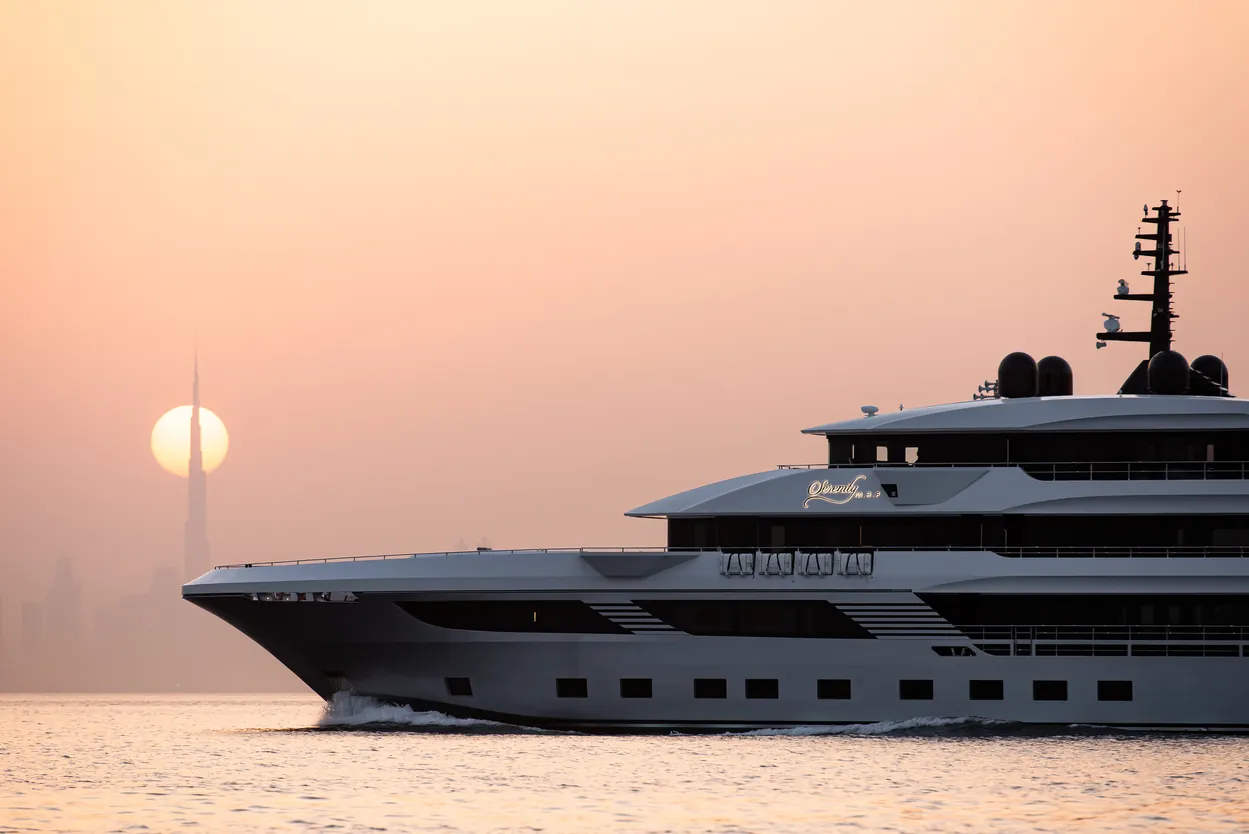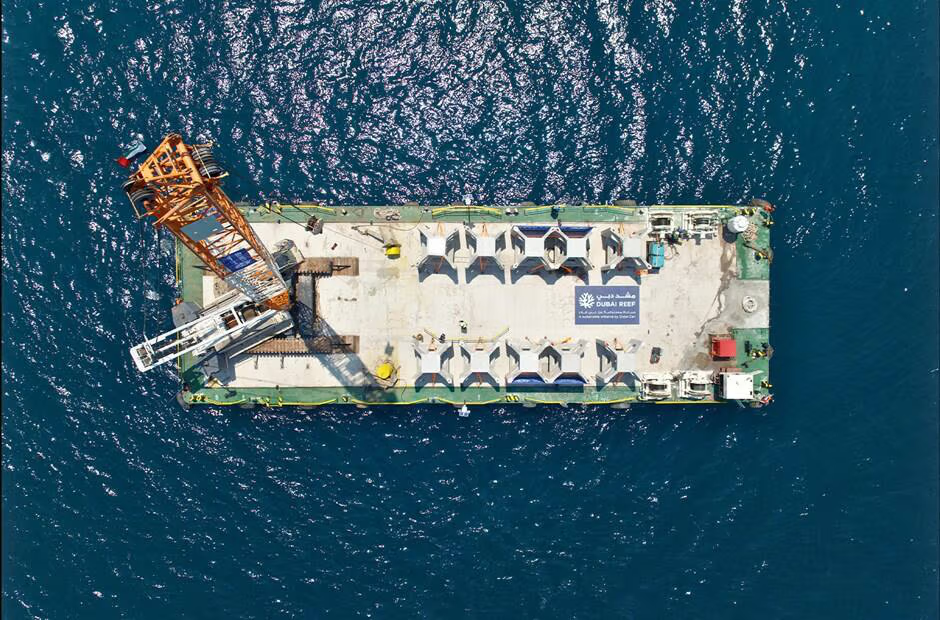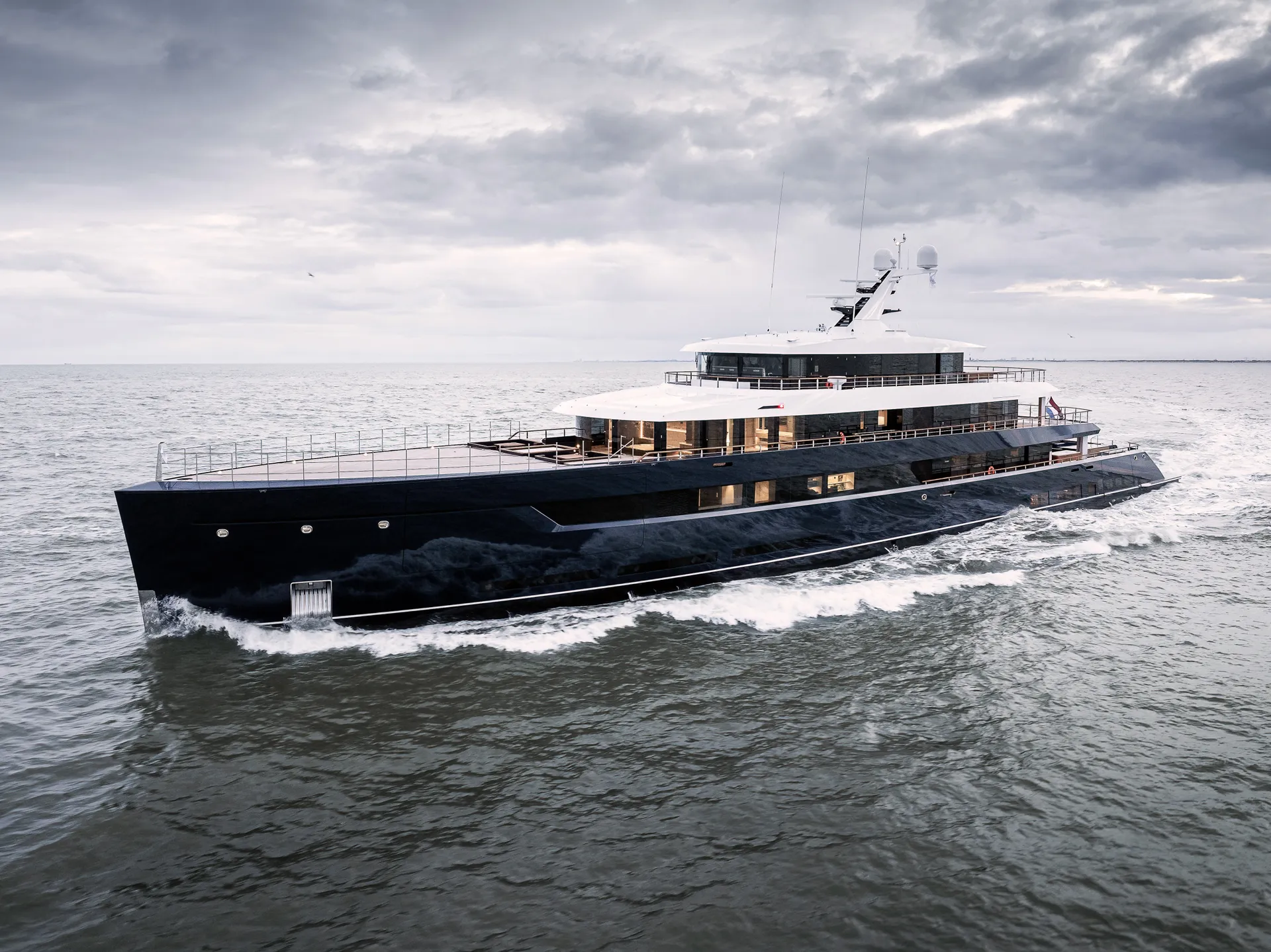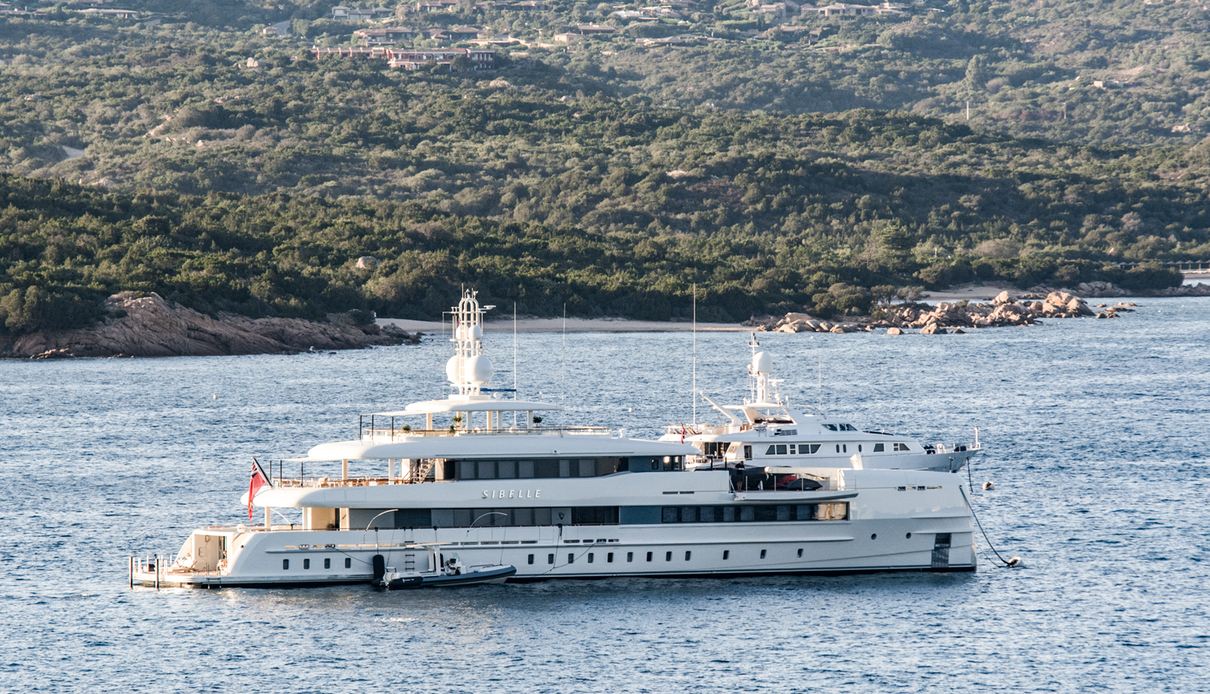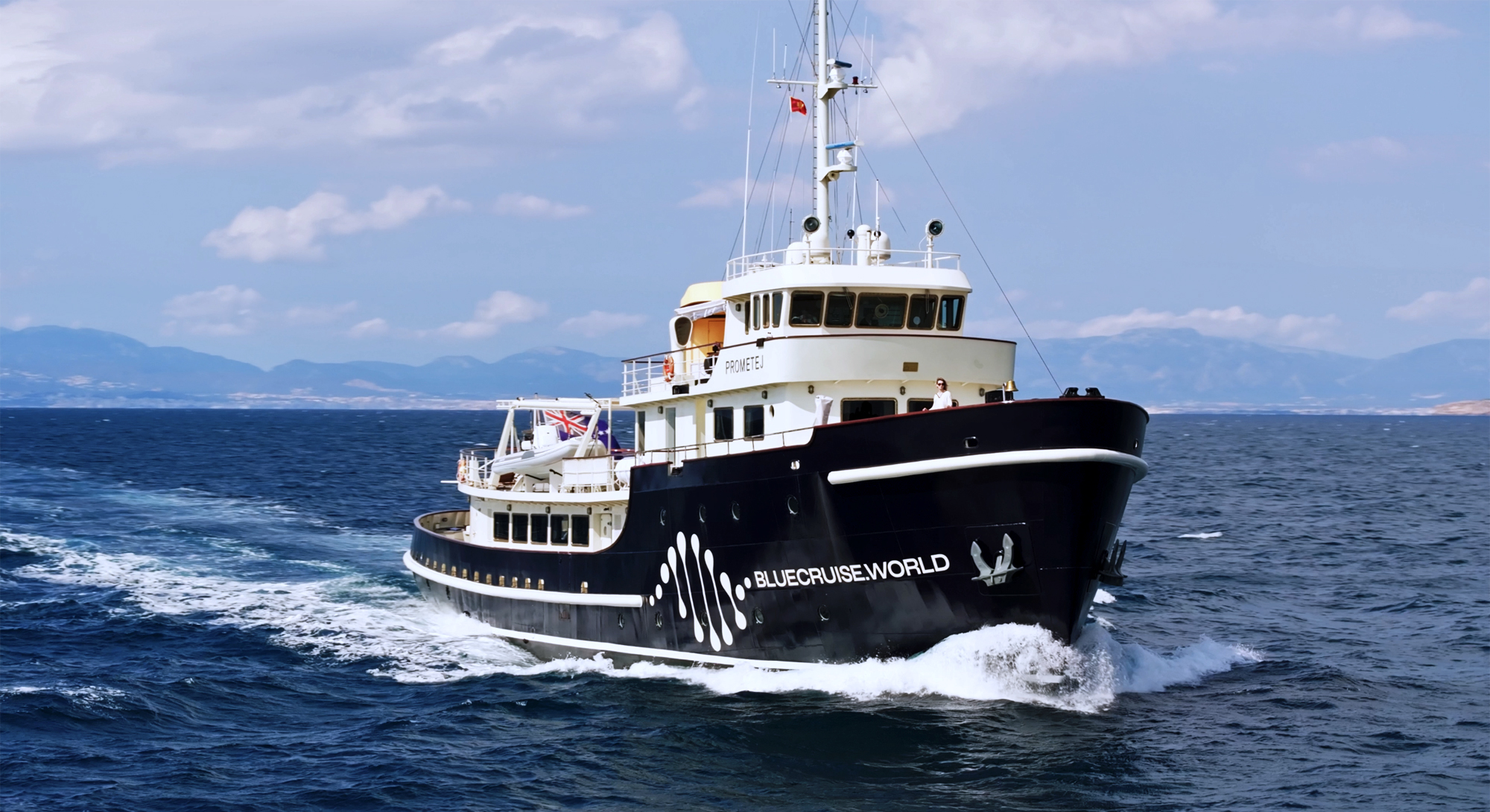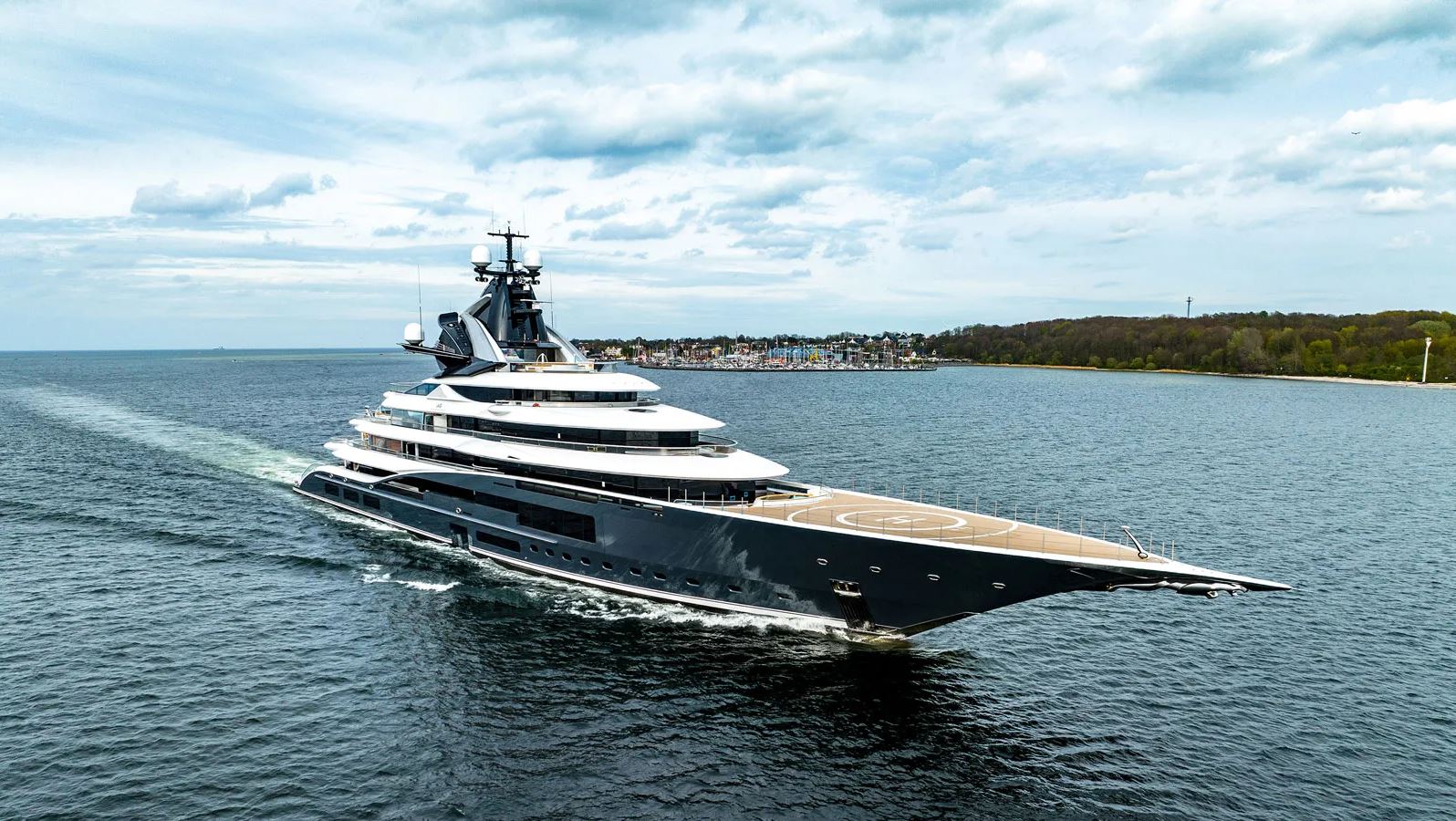Gulf Craft now offers a fully regulated crypto-payment solution for yacht and leisure craft purchases, service and refit works, reinforcing both the shipyard’s appetite for innovation and the UAE’s growing stature as a global hub for digital assets.
Author: Sibi
New DUBAI REEF Footage Reveals Thriving Marine Life and Ecosystem Growth in Dubai’s Waters
DUBAI REEF, a pioneering purpose-built reef development and one of the largest in the world, is demonstrating significant progress in enhancing marine ecosystems within Dubai’s waters. New underwater footage from the initiative’s proof-of-concept site showcases a thriving marine environment, with abundant fish populations and habitats developing around the reef modules.
Legacy in Steel: How Henk de Vries Shaped the Future of Feadship and the Superyacht World
For more than four decades, Henk de Vries has been a cornerstone of the luxury superyacht world. As the former director of the de Vries branch of Feadship, he helped guide one of the most respected shipbuilding brands through monumental industry growth. Now newly retired, Henk reflects on a life spent not just building yachts—but shaping a family legacy that sails far into the future.
A Life Anchored in Family and Craftsmanship
When Henk joined the family company in 1987, Feadship was already known for quality. But it was under his leadership that the company evolved into an international icon of craftsmanship and innovation.
Born into the fourth generation of shipbuilders, Henk didn’t always intend to join the business. In fact, during his university days, he bet his friends he’d never work for the family firm. But a few years into a consulting career, a call from his father—and a spark of curiosity—changed everything.
“I did a job interview with my cousins,” Henk recalls. “I wanted to know if they really wanted me there. And I was impressed—they were real entrepreneurs. So, I joined.”
Running the Ship
From day one, Henk was all-in. By 1996, he became a company director, alongside his cousin Tom. Together, they led Feadship through industry booms, weathered financial crises, and maintained an unwavering focus on quality.
But being a leader wasn’t just about business. Henk believed in passing the torch with purpose. Years ago, he and Tom began carefully planning their retirement, creating clear structures for the fifth generation to step in smoothly.
“Stepping away isn’t about losing purpose,” Henk says. “It’s about doing what’s best for the company—and preparing it for the future.”
Planning for the Future, Not Just the Next Launch
Unlike many family-run companies that struggle with succession, Feadship took a deliberate, thoughtful approach. Henk helped create a roadmap for leadership transition, working with family enterprise experts to prepare the next generation.
They even launched the De Vries Academy—an in-house leadership program for the 22 children of the current shareholders. “It’s about building continuity, not control,” Henk explains. “We’re shaping leaders, not just heirs.”
From Director to Ambassador
Now retired from his executive role, Henk remains an ambassador for Feadship—a position he embraces with pride. His job? Travel, meet clients, maintain relationships, and continue sharing the Feadship story.
“There’s something special about having a De Vries in the room,” he says with a smile. “Even if it’s just to say hello.”
More Than Yachts: A Passion for Classic Cars
While his professional life centered on yachts, Henk is also a passionate car enthusiast. He owns more than 30 classic automobiles, mostly from the 1950s to 1970s. For him, it’s not just a hobby—it’s another form of craftsmanship and storytelling.
“I’ve always loved how machines come together. Cars, yachts—it’s all about excellence in engineering.”
Why His Story Matters
Henk de Vries’s story is more than a tale of personal success. It’s a masterclass in leadership, legacy, and long-term thinking. In an industry where personal egos can sometimes dominate, Henk’s approach—quiet, methodical, and deeply thoughtful—stands out.
From building some of the world’s most celebrated yachts to carefully preparing the next generation, Henk proves that true leadership isn’t about holding on. It’s about knowing when—and how—to let go.
As Feadship sails into the future, it does so on a course charted by someone who understands that the best way to lead is to empower others.
Set Your Course at DIBS
The legacy of leaders like Henk de Vries reminds us of that craftsmanship, innovation, and long-term vision define the future of yachting. At the Dubai International Boat Show (DIBS), we bring these stories to life—curating the global stage where the next chapter of maritime excellence unfolds.
Whether you’re a brand looking to connect with elite buyers, or an enthusiast seeking inspiration, DIBS empowers you to navigate new opportunities—from custom activations to matchmaking and premium exposure.Partner with us for DIBS 2026 and chart your course into the future of luxury on water.
Smooth Sailing: How Laurens Last Bought Heesen Yachts in Just Five Weeks—And What Comes Next
Buying a superyacht shipyard might take most people months or even years of planning. But Dutch entrepreneur and yacht owner Laurens Last closed the deal to buy 100% of Heesen Yachts in just five weeks.
Now the new owner of one of the Netherlands’ most iconic yacht builders, Last is bringing bold ideas, personal passion, and hands-on leadership to a very traditional industry.
In an exclusive interview aboard the 50-meter Heesen yacht Bijin, Laurens shared how his journey—from packaging magnate to yacht builder—was driven by love for the ocean and a sharp eye for opportunity.
A Yacht Owner with a Vision
Laurens Last is not new to the world of yachts. He owns the 61-meter Samadhi and has spent years sailing, kite surfing, and exploring oceans around the world. For him, yachts are more than luxury—they’re a way of life.
“I’ve done it all,” he says. “From windsurfing as a kid to owning large yachts today. I live on the water, and I love it.”
That real-world experience gives him a rare perspective. “Many people build boats who’ve never spent a day living on one. That’s where I’m different—I understand how a yacht is actually used.”
Why Heesen—and Why Now?
For Laurens, buying Heesen wasn’t a long-drawn-out plan. He knew the shipyard well, having visited it five years earlier, and he admired its clean, efficient manufacturing setup. But it wasn’t until early 2024 that the opportunity became real.
“I thought about it for a week. Then we closed in five weeks,” he says. “It helped that I’m Dutch. I understand the local business culture. I saw that Heesen had no active owner at the time—and I knew I could add value.”
His approach to buying Heesen was fast, clean, and effective. “Being Dutch made the legal side easier too. It was all very straightforward.”
From Boardroom to Shipyard
Last’s background is in high-tech liquid packaging. He started as a hairdresser at 21, launched his own cosmetics brand, and eventually built an international packaging empire supplying brands like Coca-Cola and McDonald’s.
So, what does packaging have to do with yachts?
“More than you’d think,” he says. “Both industries require precision, innovation, and efficiency. In packaging, you need to manage costs carefully while delivering quality. I want to bring that same mindset to yacht building.”
A New Kind of Owner
Heesen is used to corporate ownership. Now, with a private owner who shows up, speaks to the team, and gets involved in design and operations, things are changing.
“I’m in the shipyard one week every month,” Laurens says. “I talk with staff, with clients, with designers. I bring my captain to project meetings. I want to blend all that knowledge—owner, crew, builder—into better boats.”
He’s also embracing his new public-facing role. “Publicity isn’t natural to me. But in yachting, it’s part of the job. Owners want to know who they’re buying from—and they want to trust you.”
Building Better Boats—Smarter
Last sees room for improvement in how yachts are built, especially in Northern Europe where labour costs are high.
“We can use automation and robotics to make things more efficient,” he explains. “I’m used to running lean, cost-efficient factories. I want every euro we spend to go into the boat—not overhead.”
But Laurens doesn’t believe in cutting corners. He’s focused on value over volume, and on what he calls total cost of ownership.
“It’s not just about what you pay upfront. A well-built yacht keeps its value, has lower maintenance costs, and gives you more time on the water. That’s what really matters.”
More Than Just Margins
In an industry where profit margins are famously thin, Laurens is aiming higher.
“Why can a handbag sell for 10 times what it costs to make, but a yacht builder struggles to make 2% profit? We need to rethink how we talk about value. A superyacht is one of the most advanced products on the planet—and it should be priced like it.”
He hopes to build a stronger brand around Heesen, one that creates emotional connection and exclusivity—much like Ferrari or Hermès.
“We need to make people feel proud to own a Heesen. It’s not about volume—it’s about being the best.”
What’s Next?
Laurens is already dreaming big. He wants to lead design innovation, improve efficiency, and build deeper relationships with yacht owners. Most of all, he wants to make Heesen a place where quality, performance, and passion come together.
He sums it up simply: “This isn’t just a business investment. It’s a way to live my passion—and help shape the future of yacht building.
Join the builders shaping tomorrow
Visionaries like Laurens Last are redefining what it means to build and own a superyacht—and DIBS is the platform where these transformations take centre stage. The Dubai International Boat Show (DIBS) delivers the connections, visibility, and market access that brands like Heesen need to thrive.
Whether you’re a legacy shipyard or a disruptive new voice, we help you unlock the full potential of the DIBS ecosystem—from bespoke activations to premium buyer matchmaking.
Secure your space for DIBS 2026 and connect with a global audience that’s ready to build the future with you.
BlueCruise: A Floating Experiment in Living Longer and Better
What happens when a seasoned entrepreneur, a wellness pioneer, and a rugged ice-class explorer yacht set off together on a global mission? You get BlueCruise—an 18-month longevity expedition aboard the 45-meter Prometej, designed to push the boundaries of how we age, live, and connect.
This journey was first introduced on the Longevity by Design podcast, where Tobias Reichmuth, co-founder of Maximon and a serial entrepreneur, shared his bold vision. Alongside co-creator Aleksandra Jovanovic, founder of Powercube and a biohacker in her own right, the two have transformed Prometej from an ex-Soviet icebreaker into a roving, high-tech wellness hub. Their shared mission: to live better, not just longer—and bring others along for the ride.
But this is no luxury cruise. BlueCruise is a living laboratory, navigating both tropical waters and Blue Zones—Okinawa, Nicoya, Sardinia, Loma Linda, and Ikaria—where people routinely live past 100. Along the way, the handpicked crew of health experts, entrepreneurs, researchers, and creatives dive deep into healthspan research, real-time diagnostics, and immersive local experiences.
Each guest undergoes full-body profiling—DNA, blood panels, microbiome, epigenetics—powered by AYUN Longevity Clinics. The data is used to craft a custom wellness protocol onboard. There’s chef-prepared precision nutrition, hyperbaric oxygen, red light therapy, cold plunges, Technogym training, and even IHHT (intermittent hypoxia–hyperoxia training).
The vibe? Equal parts biohacking retreat, think tank, and adventure collective. There’s no ticket to buy. Participation is based on curiosity, contribution, and a shared passion for solving the longevity puzzle together.
This isn’t just a podcast idea or a press headline—it’s happening now, at sea. And it’s rewriting what it means to travel, age, and thrive in the 21st century.
Photo credit: Megayacht News
Reef Revival: How Marine Scientist Dr. Camilla Floros is Restoring Oceans with Super Corals and Community Action
Coral reefs are among the planet’s most biodiverse ecosystems—and some of the most endangered. Rising temperatures, unchecked tourism, and destructive fishing practices have pushed many reefs to the brink. But Dr. Camilla Floros, marine biologist and Program Manager for Oceans Without Borders, is at the forefront of efforts to turn the tide.
In a recent episode of the BOAT Briefing podcast, Dr. Floros shared how her work combines cutting-edge science with grassroots stewardship. The goal? Rebuild reef systems in East Africa—and ensure local communities benefit from protecting them.
A Scientist Rooted in Place
Though raised inland in South Africa, Dr. Floros’s fascination with coral began during childhood visits to Mozambique’s Bazaruto Archipelago. Over time, that fascination evolved into a career in marine biology and hands-on conservation.
Today, through the Oceans Without Borders program—run by luxury travel brand andBeyond and nonprofit Wild Impact—her team operates in both Bazaruto and northern Zanzibar. Their work focuses on restoring damaged reef systems while putting local people at the center of marine protection.
Community First, Always
What sets this program apart is its integrated approach. Local residents aren’t just consulted—they’re trained as marine rangers, involved in data collection, reef construction, and daily protection efforts.
“We rely on our rangers for everything,” says Dr. Floros. “They’re not just participants—they’re leaders.”
Education plays a major role too, with marine conservation woven into local school curricula to ensure the next generation grows up as stewards of their environment.

Turning Science Into Resilience
Dr. Floros and her team are also leveraging a new ally in the fight against reef collapse: heat-resistant “super corals.” These strains have shown a remarkable ability to survive bleaching events and are being cultivated in nurseries before being replanted across damaged sites.
One standout success: the protected reef system around Nemba Island, which was once overwhelmed by tourism. After community-led reform—including visitor caps and conservation levies—the reef has begun to recover. Coral cover is growing, fish populations are returning, and tourism revenue is being redirected into local development.
Why This Matters
Coral reefs aren’t just scenic backdrops—they’re essential infrastructure. They protect coastlines, support marine life, and generate billions in global tourism and fisheries. The loss of coral would be a humanitarian crisis as much as an ecological one.
“We need to stop thinking of reefs as someone else’s issue,” says Dr. Floros. “This is about livelihoods, climate resilience, and justice.”
What You Can Do
The advice is simple: be aware of your footprint. Whether you’re at sea or hundreds of miles from the coast, reducing waste—especially plastics—makes a difference. Trash travels, and even small individual actions have ocean-wide impacts.
Photo credit: Oceans without Boarders
Lürssen celebrates 150-year anniversary
Founded on 27 June 1875, German yard Lürssen is celebrating 150 years of shipbuilding this summer, marking its stellar rise from modest beginnings to one of the premier names in yachting.
